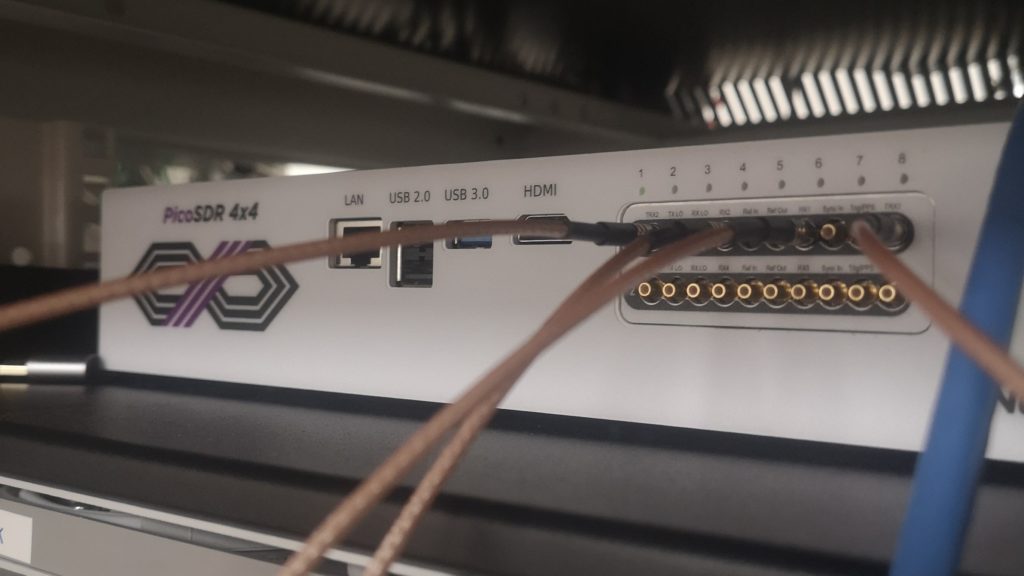Blogs
22 September 2022
Reading Time: 4 mins
Blogs
22 September 2022
Reading Time: 4 mins
Cellular connectivity is great for global or business-critical IoT deployments requiring ubiquitous, reliable and secure communications.
But it’s not easy.
Unlike smartphones, connecting IoT devices isn’t plug-and-play. Thorough connectivity testing during design, field trials and onboarding is key to deploying fit-for-purpose IoT devices. Testing using public networks has its advantages – it shows how devices will cope in the real world. However, sometimes you need a controlled – but realistic – environment to run tests and investigations.
In this article, we show how Eseye’s network-in-a-box service can emulate public LTE networks for testing and troubleshooting 4G, CAT-M and NB-IoT devices.
The LTE standards CAT-M and NB-IoT are specifically designed for IoT, offering low speed, low power, long-range connectivity for small bandwidth applications.
Operators are rolling out these networks, but availability is patchy. Some regions have one or the other, some have neither. Operators may not yet provide access to the required bands and roaming agreements between networks are limited.
Depending on your location, you may not have access to a public network for your testing.
This is particularly problematic for NB-IoT devices. NB-IoT operation is markedly different to other LTE standards, so it’s critical to test designs early to verify that it’s a suitable choice for your IoT deployment.
Designing battery-powered IoT devices that can last for years without recharging or replacing the batteries is challenging.
Connectivity has a major impact on power usage so it’s important to analyse power consumption under different conditions during design. Testing can also cover:
Operators configure their networks in different ways to meet their goals and user requirements.
Emulating specific networks in the lab can check your device performance with the specific networks that your devices will use. This can verify that the devices meet any certification requirements required.
Security and resilience are key priorities for IoT.
Devices need secure authentication, communication and storage capabilities. They should handle over-the-air updates and cope gracefully with network outages, disruption and abnormal events.
A controlled network test environment can simulate tests, such as brute force authentication attacks, penetration tests and unexpected disconnections, which can be difficult – or impossible – to engineer with public networks.
Investigating connectivity issues in the field can be challenging. Simulating the scenario in a lab with a test network replicates the issue in controlled conditions. Engineers can then carry out more detailed investigations and debugging to resolve issues.
Using public networks during end of line production testing is problematic. A test network in the production plant provides a more predictable and stable environment in which to test devices at the end of a high-volume production line.
Our IoT Professional Services team has a new tool to help our customers succeed with their IoT projects – a network-in-a-box test service.
At the core of this service is the Nutaq PicoLTE Test & Measurement Platform. The Nutaq PicoLTE is a software-defined radio that creates a small cell LTE network, implementing the components in software rather than hardware. The equipment is compact – about the size of a briefcase – and can be set up to operate with specific frequencies, channels and bands. It offers LTE 4G, CAT-M and NB-IoT radio access technology (RAT) types.
With our knowledge of the networks and relationships with multiple operators, we can configure the Nutaq PicoLTE to emulate specific networks. This provides realistic environments for device design and testing devices in preparation for operator certification or go-live deployments. We can also replicate scenarios from the field that require further investigation in lab conditions.
With the comprehensive programming interface, we can set up automated tests for repeatable and controlled testing.

Our Hera router is a high specification IoT edge device that’s been deployed in countries all around the world and performed reliably over many years.
So we didn’t expect connection failures when a global biotechnology customer deployed Hera devices in a location with a network that’s previously worked fine. The network operator even issued a notification for the devices to stop spamming the network with connection requests.
To get to the bottom of the issue, we used logs from the network and the Hera to replicate the same scenario using our network-in-a-box test service. From this, we established that the devices were successful in the first connection stage. The second stage – which should have completed automatically – was failing. Given the unexpected result, the devices continued their connection attempts, generating a considerable amount of traffic in the locale.
We took the evidence to the operator to prove that their network was at fault. Although it was a network error, we also took the opportunity to enhance the Hera to ensure that if it does encounter that unusual scenario, it restricts its reconnection attempts to avoid overloading the network.
To learn more about how our network-in-a-box service can make your devices more resilient
Get in touch
Eseye
IoT Hardware and Connectivity Specialists
LinkedInEseye brings decades of end-to-end expertise to integrate and optimise IoT connectivity delivering near 100% uptime. From idea to implementation and beyond, we deliver lasting value from IoT. Nobody does IoT better.